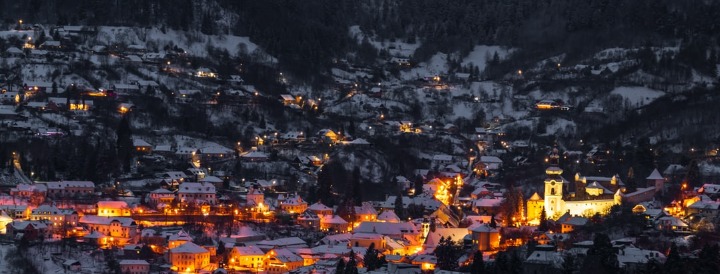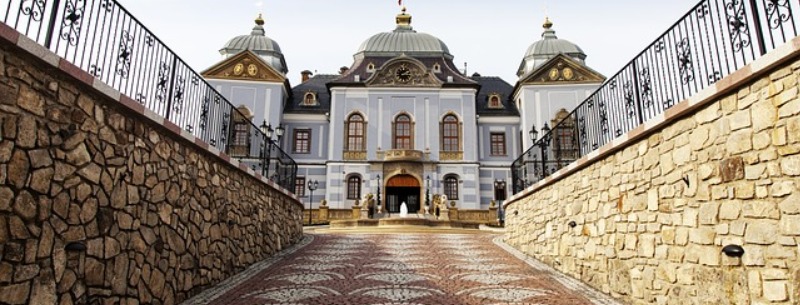2024 Slovakia Visitors Guide
The republic of Slovakia (Slovensko) – independent since 1993 – consists of the long, narrow strip of land that stretches from the fertile plains of the Danube basin up to the peaks of the High Tatras – perhaps Europe’s most exhilarating mountain range outside of the Alps. The country’s numerous mountains have long formed barriers to industrialization and modernization, and parts of the country remain surprisingly rural and unspoiled, some to the point of neglect.
There was only one independent Slovak state before 1993 when the country operated as a German protectorate during World War II – a period that remains a blot on the nation’s history. Before 1918, current-day Slovakia was known as the region of Upper Hungary and lay under Magyar rule for roughly a millennium; Bratislava even became the Hungarian capital when the rest of Hungary was occupied by the Turks. However, in 1918, the Slovaks threw their lot in with their Slav neighbors, the Czechs, forming Czechoslovakia. This lasted 75 years until the country’s “velvet divorce” took place in 1993. Although many Slovaks were ready to go it alone, it has to be said that others had major reservations about this, and none was given the chance to decide in a referendum. Political corruption, nationalism, and slow-moving reforms put off overseas investors until a change of government in 1998, since when the country’s economic prospects under Prime Minister Dzurinda have brightened and firm steps towards joining the European Union have begun.
For the first-time visitor, perhaps the most striking cultural difference from the Czechs is the Slovak attitude to religion. Catholicism is much stronger here than in the Czech Republic, and the churches are often full to overflowing on Sundays. The republic also has a much more diverse population, with over half a million ethnic Hungarians in the south, as well as thousands of Romanies (gypsies), who live a fairly miserable existence throughout the country, and several thousand Ruthenians (Rusyns) in the east. Bratislava , the capital, is potentially disappointing, especially for those who arrive expecting a Slovak Prague. Taken on its own terms, however, the city is a rewarding, lively place with a compact old town. Poprad provides the transport hub for the High Tatras , the most spectacular of Slovakia’s many mountain ranges, and is also the starting point for exploring the intriguing medieval towns of the Spis region, east Slovakia’s architectural high point. Further east still, Presov is the cultural center of the Ruthenian minority, while Kosice , Slovakia’s vibrant second city, boasts a fine Gothic cathedral, ethnic diversity and lively independence from much of the rest of Slovakia.
Top Attractions in Slovakia
Bratislava Castle
Climb the steep steps up to the city’s castle or Hrad, and gape at the awesome sight of the Petrzalka housing estate on the other side of the Danube, which houses around a third of the city’s population.
Spissky Hrad
A pile of chalk-white ruins strung out along a bleak green hill, Spissky hrad is by far the most photogenic of Slovakia’s many ruined castles.
Modry Kostol, Bratislava
Hidden away behind Safárikovo námestie is the lovely Art Nouveau Modry kostol or “Blue Church”, decorated inside and out with the richness of a Viennese cake.
SNP Museum, Banská Bystrica
The mushroom-shaped SNP Museum, Slovakia’s premier military museum, is a paean to the country’s costly and unsuccessful uprising against the Nazis, which took place in the summer of 1944.
Hiking in the High Tatras
Take the narrow-gauge funicular railway from Stary Smokovec to Hrebienok, and then set off on a day’s hike in the spectacular granite peaks of the High Tatras.
Wooden Church, Kezmarok
Next door to the Kezmarok’s gaudy nineteenth-century Lutheran church stands its wooden predecessor, a work of remarkable carpentry capable of seating nearly 1500 people.
Hotel Club, Kezmarok
Hotel Club is one of the most welcoming of the country’s new breed of privately run pensions, with tastefully furnished rooms (a rarity in these parts) and a buffet breakfast.
Church of sv Jakub, Levoca
The Gothic church of sv Jakub in Levoca is packed full of carved sixteenth-century altarpieces by local maestro, Master Pavol, the largest of which reaches a height of 18.5m.
Kosice Cathedral
Kosice’s Gothic cathedral is without a doubt the finest in the country, dominating the city’s grand, the lozenge-shaped main square.

East Slovakia
Stretching from the High Tatras east to the Ukrainian border, the landscape of East Slovakia is decidedly different from the rest of the country. Ethnically, this is probably the most diverse region in the country, with different groups coexisting even within a single valley. The majority of the country’s Romanies live here, mostly on the edge of Slovak villages, in shanty towns of almost medieval squalor. In the ribbon villages of the north and east, the Rusyn minority struggle to preserve their culture and religion, while along the southern border, there are large numbers of Hungarians. After spending time in the rural backwaters, Kosice , Slovakia’s second-largest city, can be a welcome though somewhat startling return to city life. Gradually realizing its potential as a diverse and vibrant cosmopolitan center, it certainly contains enough of interest for at least a day’s stopover.
Bratislava Travel Guide
BRATISLAVA has two distinct sides: the old quarter is an attractive slice of Habsburg Baroque, while the rest of the city has the brash and butchered feel of the average East European metropolis. More buildings have been destroyed here since the war than were bombed out during it, the whole Jewish quarter having been bulldozed to make way for a colossal suspension bridge and highway. Yet, even though the multicultural atmosphere of the prewar days has gone, there is a certain Central European cosmopolitanism here, at the meeting of three nations – boosted by a thriving café culture.
Trams from the main train station offload their shoppers and sightseers behind the Hotel Fórum in Obchodná – literally Shop Street – which descends into Hurbanovo námestie, a busy junction on the northern edge of the old town (staré mesto). Here you’ll find the hefty mass of the Kostol trinitárov , one of the city’s finest churches, its exuberant trompe l’oeil frescoes creating a magnificent false cupola.Opposite the church, a footbridge passes under a tower of the city’s last remaining double gateway. Below is a small section of what used to be the city moat, now a garden belonging to the Baroque apothecary called U cerveného raka , on your left between the towers, which now houses a Pharmaceutical Museum (Farmaceutická expozícia; Tues-Fri 10am-5pm, Sat & Sun 11am-6pm), displaying everything from seventeenth-century drug grinders to reconstructed period pharmacies. The second and taller of the towers is the Michalská brána (Mon & Wed-Sun 10am-5pm), an evocative and impressive entrance to the old town and now a weapons museum; the rooftop view from the top of the tower is superb.
Michalská and Ventúrska, which run into each other, have both been beautifully restored and are lined with some of Bratislava’s finest Baroque palaces. There are usually plenty of students milling about amongst the shoppers, as the main university library is on this thoroughfare. The palaces of the Austro-Hungarian aristocracy continue into Panská, starting with the Pálffy Palace , at Panská 19, today an art gallery (Tues-Sun 10am-5/6pm), housing a patchy collection of Slovak paintings from the nineteenth and twentieth centuries.
A little northeast of here is the adjoining main squares of the old town – Hlavné námestie and Frantiskánske námestie – on the east side of which is the Old Town Hall (Stará radnica; Tues-Fri 10am-6pm, Sat & Sun 11am-6pm), a lively hotchpotch of Gothic, Renaissance and nineteenth-century styles containing the Municipal Museum – worth visiting if only for the medieval torture exhibition in the basement dungeons. The Counter-Reformation, which gripped the parts of Hungary not under Turkish occupation, issues forth from the square’s Jesuit Church (Jezuitsky kostol), whose best feature is its richly gilded pulpit. Diagonally opposite is the Mirbach Palace (Tues-Sun 10am-5pm), arguably the finest of Bratislava’s Rococo buildings, preserving much of its original stucco decor.
Round the back of the Old Town Hall, with the stillness of a provincial Italian piazza during siesta, is the Primaciálne námestie , dominated by the Neoclassical Primate’s Palace (Tues-Sun 10am-5pm), whose pediment frieze is topped by a cast-iron cardinal’s hat. The palace’s main claim to fame is its Hall of Mirrors, where Napoleon and the Austrian emperor signed the Peace of Pressburg (as Bratislava was then called) in 1805. You can now visit this, and several other rooms hung with portraits of the Habsburgs and seventeenth-century English tapestries, found by chance during the building’s renovation.
Despite its proximity to Vienna and Budapest, the city has produced only one composer of note, Johann Nepomuk Hummel (1778-1837). The composer’s birthplace, a cute apricot-colored cottage hidden away behind two fashionable shops on Klobucnícka, is now a museum (Tues-Sun 11am-5pm). Beyond, at the top end of Stúrova, is Kamenné námestie , overlooked by a giant Tesco supermarket, in front of which the whole city seems to wind up after work, to grab a beer or takeaway from one of the many stand-up stalls, then jabber away the early evening before catching the bus or tram home.
Traveling to Slovakia
Trains
- Bratislava to: Banská Bystrica (2 daily; 4hr-4hr 30min); Poprad-Tatry (6 daily; 4hr-5hr 30min); Presov (1 daily; 7hr); Kosice (6 daily; 5hr-6hr 15min).
- Poprad-Tatry to Stary Smokovec (2 hourly in high season, hourly in low season; 45min); Kezmarok (12 daily; 30min); Presov (2 daily; 1hr 30min); Kosice (12 daily; 1hr 30min).
Buses
- Levoca to: Spisské Podhradie (up to 15 daily; 30min).
- Poprad to: Levoca (up to 15 daily; 30min-1hr 30min); Spisské Podhradie (up to 12 daily; 30-45min); Presov (up to 20 daily; 2hr).
Food & Drink
Slovak food is no-nonsense, filling fare, and pretty similar to Czech cuisine, although traces of Hungarian, Polish, and Ukrainian influences can be found in different regions.
Food
The usual mid-morning Slovak snack at the buffet (stand-up canteen) is párek, perhaps the most ubiquitous takeaway food in Central Europe, a hot frankfurter, dipped in mustard or horseradish and served inside a white…
Drink
The vineyards in the south of Slovakia produce some pretty good medium-quality white wines, which share characteristics with their Hungarian and Austrian neighbors. The home production of brandies is a national pastime, resulting sometimes in…
Opening Hours & Holidays
Opening hours for shops in Slovakia are Mon-Fri 9am-6pm, Sat 8 am-noon, with some shops and most supermarkets staying open later. Smaller shops close for lunch for an hour or so sometime between noon and 2 pm. Most shops are closed on Sunday, but supermarkets and out-of-town hypermarkets are open all day in large towns and cities.The basic opening hours for castles and monasteries are Tues-Sun 9am-5pm, though the last admission will be half an hour before closing. In April and October, opening hours are often restricted to weekends and holidays. From the end of October to the beginning of April, most castles are closed. When visiting a sight, always ask for an anglicky text, an often unintentionally hilarious English resumé. In Bratislava the main museums open Tues-Fri 10am-5pm, Sat & Sun 11am-6pm, though there are exceptions. In winter, many museums close half an hour earlier than the times quoted in this guide. Entrance tickets for all sights never cost more than £1/$1.50 – hence no prices are quoted in the text.
Public holidays include Jan 1 (Independence Day); Jan 6 (Epiphany); Easter Monday; May 1 (Labour Day); July 5 (SS Cyril and Methodius day); Aug 29 (Slovak National Uprising); Sept 1 (Constitution Day); Sept 15 (Our Lady of Sorrows); Nov 1 (All Saints’ Day); and Dec 24, 25 & 26.
